What's the difference between latex balloons and latex gloves?
Are you puzzled about the difference between latex balloons and latex gloves? You are not alone. Many people think they are the same. But they are very different.
Latex balloons and latex gloves are made from different processes. They have different uses. They also have different material properties1. The type of latex used can be different for each.
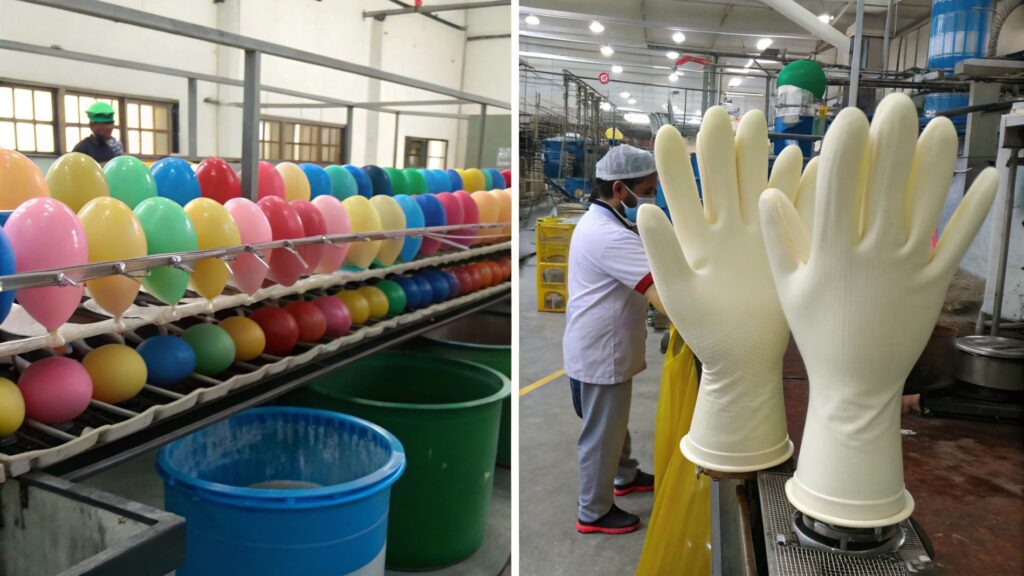
When I first started in the balloon industry, I also thought they were similar. I quickly learned they are very different products. Let's look closer at how they differ.
How are latex balloons made differently from latex gloves?
Have you ever wondered how a balloon or a glove is made? The base material is the same, but the making process is different. These differences give them their final features.
The manufacturing process for latex balloons and latex gloves starts with liquid latex. But the steps after this are not the same. These different steps make the final product unique.
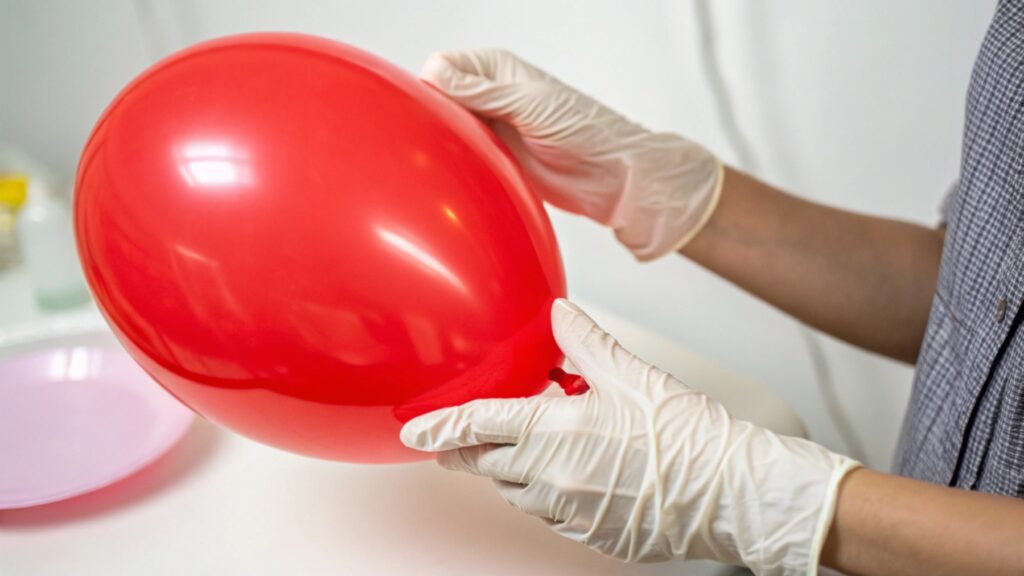
Let's look at the steps for each product.
Balloon Manufacturing
The process for making balloons involves dipping molds into liquid latex. These molds are shaped like balloons. The latex coats the mold. Then, the latex is dried and cured. Curing is a process where the latex hardens. Color is added to the latex mix before dipping. This is why balloons come in many colors. Special finishes or coatings might be added. These steps create the balloon's stretchiness and color. The thickness of the latex layer on the mold controls the balloon's final thickness. This process needs to be exact to make sure each balloon inflates properly. The molds spin while they are dipped. This makes sure the latex spreads evenly. Hot air is used to dry the latex quickly. This is a simple process but needs careful control. Small changes in temperature or dipping time can affect the final balloon quality.
Glove Manufacturing
Making latex gloves also uses dipping molds. But the molds are shaped like hands. The latex is usually thinner than for balloons. This is because gloves need to be flexible and sensitive. Powder is often added to the inside of gloves. This makes them easier to put on and take off. This is different from balloons. The curing process2 for gloves can be more strict. This is because gloves are often used in medical or clean environments. Quality control for gloves is very high. They are checked for holes and strength. The dipping time and speed are carefully controlled. This makes sure the gloves are the correct thickness. The molds are cleaned very well between dips. This prevents defects. The drying process for gloves is also important. It makes sure the gloves are not sticky.
| Feature | Latex Balloons | Latex Gloves |
|---|---|---|
| Mold Shape | Balloon shape | Hand shape |
| Latex Thickness | Thicker | Thinner |
| Color | Many colors | Usually limited colors (natural, blue, white) |
| Additives | Color pigments, sometimes special coatings | Powder (sometimes), anti-tack agents |
| Curing | Standard curing | Often more strict curing |
| Primary Check | Inflation, size, color | Holes, strength, size |
These different making methods give balloons and gloves their different features and uses.
What are the primary uses for latex balloons versus latex gloves?
While both are made from latex, their uses are very different. One is for fun and parties. The other is for protection and safety.
Latex balloons are mostly used for decoration and entertainment. Latex gloves are mainly used for protection in various jobs and settings.
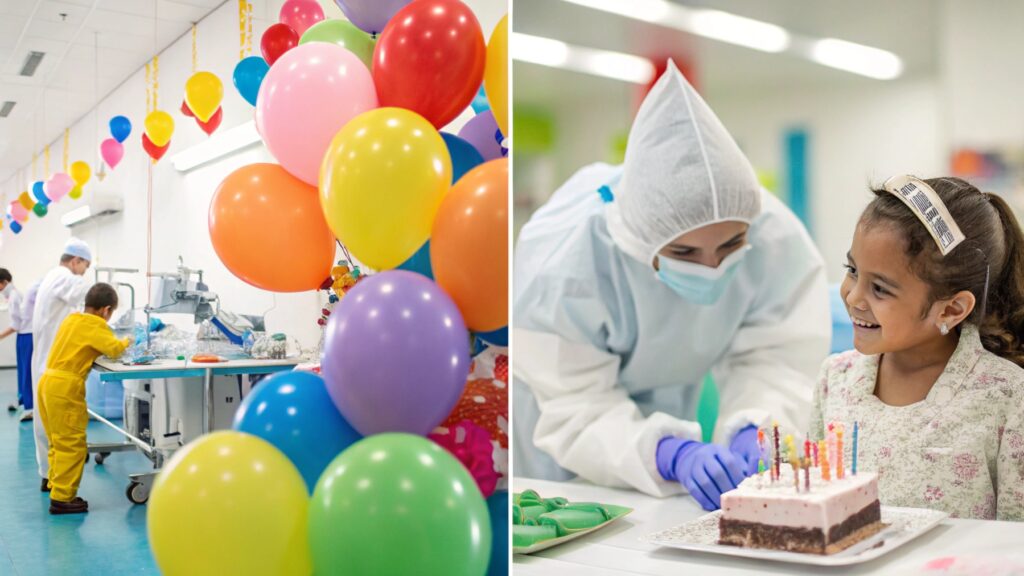
Let's explore where you would typically find each product being used.
Uses of Latex Balloons
Latex balloons are everywhere there is a celebration. People use them for birthday parties. They are common at weddings. Stores use them for grand openings. They are also used in art and decoration. Balloon artists make amazing shapes and designs with them. Sometimes they are used for scientific projects, like weather balloons. The bright colors and ability to float make them perfect for parties. They bring a sense of fun and joy. Children love playing with them. They are easy to use and dispose of after the event. Their main job is to make events look festive and happy. My first memory of balloons is at a small town fair. The bright colors of the balloons tied to a string felt magical.
Uses of Latex Gloves
Latex gloves have a more serious job. They are used to protect people. Doctors and nurses wear them in hospitals. They stop germs from spreading. Lab workers use them to handle chemicals safely. Food service workers wear them to keep food clean. Cleaners use them to protect their hands from cleaning products. Tattoo artists wear them for hygiene. They create a barrier between the skin and outside things. This protects both the person wearing the glove and the person or thing they are touching. This is very important for health and safety. I remember seeing doctors wearing gloves on TV as a child. It showed me their important role in keeping people safe and healthy.
| Product | Primary Use | Examples of Use |
|---|---|---|
| Latex Balloons | Decoration, Entertainment | Parties, weddings, events, art, play |
| Latex Gloves | Protection | Medical, lab work, food service, cleaning |
The different uses show why they need different features and quality standards.
Do latex balloons and latex gloves have different material properties?
Yes, they do have different material properties3. These properties are designed for their specific uses.
While both are flexible, latex balloons are made to be very stretchy and hold air. Latex gloves are made to be strong but thin, for touch and protection.
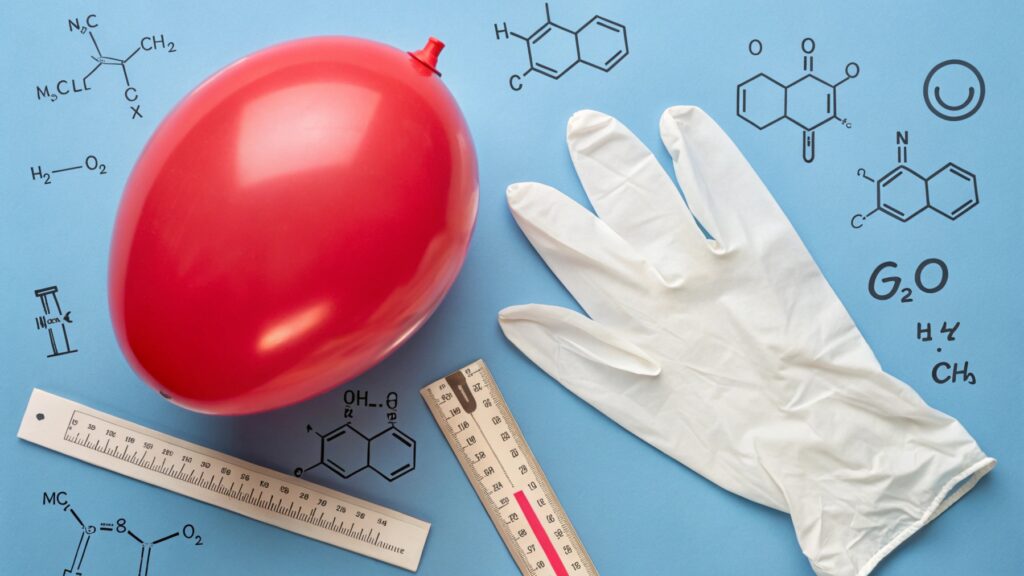
Let's look at the key material differences between them.
Properties of Latex Balloons
Latex balloons need to stretch a lot without breaking. They must hold air or helium for a long time. The latex must be strong enough to handle pressure. But it also needs to be light. The surface can be shiny or matte. This depends on how it is made. The color must be bright and not fade easily. The elasticity is a key property. A good balloon can expand many times its original size. They also need to be resistant to tearing once inflated. The material is optimized for inflation and visual appeal. I remember testing balloon elasticity4 when I first started. It was surprising how much they could stretch.
Properties of Latex Gloves
Latex gloves need to be strong against punctures and tears5. They must be a good barrier against liquids and germs. They also need to allow for good touch sensitivity. This is important for doctors or lab workers. They are usually less stretchy than balloons. But they are more durable in use. They are often tested for pinholes. Even a tiny hole makes a glove useless for protection. The surface can be smooth or textured for grip. The feel of the material is important for the user. They need to fit snugly but be comfortable. The material properties are focused on barrier protection and function. I learned about the strict testing for medical gloves. It showed me the high standards required for safety products.
| Property | Latex Balloons | Latex Gloves |
|---|---|---|
| Stretchiness | Very high | High, but less than balloons |
| Tear Resistance | Good when inflated | High, especially against punctures |
| Barrier | Holds air/helium | Barrier against liquids/germs |
| Thickness | Thicker | Thinner |
| Surface Feel | Smooth, shiny, or matte | Smooth or textured |
| Key Function | Inflation, visual appeal | Protection, touch sensitivity |
These different properties are why they cannot be used for the other's main purpose.
Can the same type of latex be used for both balloons and gloves?
While both use natural rubber latex, the exact composition and treatment of the latex mix can differ.
Yes, they can start with the same base natural rubber latex. But the specific latex compound and additives are changed for each product's needs.
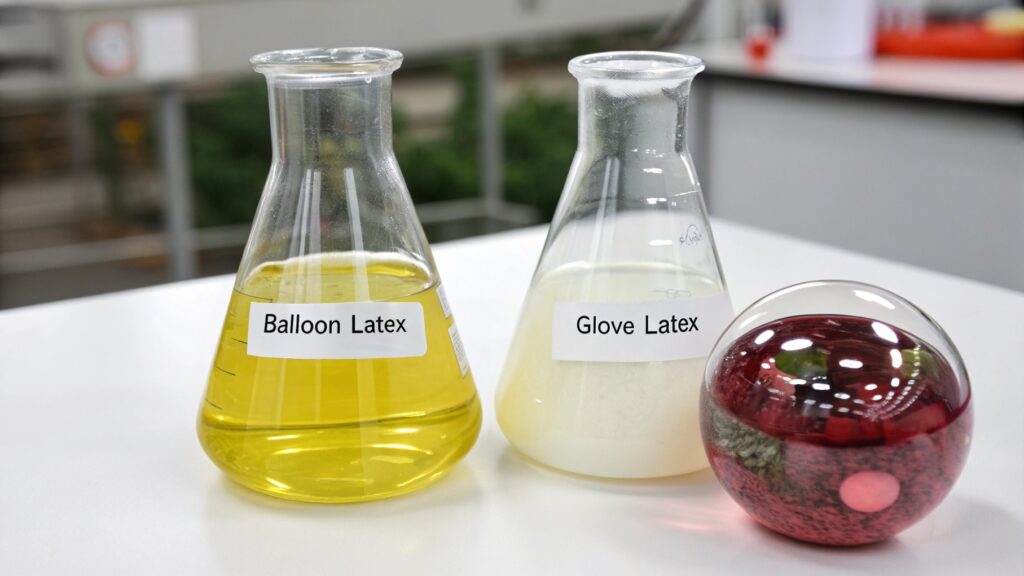
Let's look at how the latex material itself might be different for balloons and gloves.
Latex for Balloons
For balloons, the latex compound is focused on elasticity and color. Additives are used to make the latex stretchy. Pigments are added for bright colors. Stabilizers are included to keep the latex liquid before it is made into a balloon. The final balloon must cure well to be strong. The latex needs to handle stretching without getting thin in spots. The quality of the natural latex itself is important. It affects the final balloon's stretch and life. Different grades of latex might be used. My company, AIHUA BALLOON, uses high-quality natural rubber latex. We make sure it meets global safety standards. This quality is key to our balloons.
Latex for Gloves
For gloves, the latex compound is focused on strength, barrier properties, and safety. Chemicals are added to make the latex stronger against tearing and punctures. The curing process is often more complete to reduce allergens. Anticoagulants are used to keep the liquid latex stable. The compound must meet strict rules for medical use if they are medical gloves. Powder is sometimes added to the mix or to the finished glove. This helps with putting them on. The exact mix of chemicals added to the latex is key to making a good glove. It needs to be safe for skin contact. The consistency of the latex mix is very important for thin, even gloves.
| Aspect | Latex for Balloons | Latex for Gloves |
|---|---|---|
| Key Additives | Stretch agents, color pigments | Strengthening agents, curing aids |
| Focus | Elasticity, color, inflation | Strength, barrier, safety |
| Curing Emphasis | Strength after stretching | Barrier function, allergen reduction |
| Standards | Safety for play/decoration | Medical/safety standards (often) |
| Final Properties | Stretchy, colorful, inflatable | Strong barrier, good feel, safe |
The base material is the same, but how it is treated and what is added makes them suited for different jobs.
Conclusion
Latex balloons and latex gloves are not the same, though both use latex. They differ in making, uses, and material features.
-
Understanding the material properties of latex products can help you choose the right one for your needs, whether for balloons or gloves. ↩
-
Learn about the curing process in latex manufacturing to understand its importance in ensuring product quality and durability. ↩
-
Understanding the material properties can help you choose the right product for your needs, whether for decoration or protection. ↩
-
Understanding balloon elasticity is crucial for selecting the right balloons for various events and decorations. Explore this link for detailed insights. ↩
-
Preventing punctures and tears in latex gloves is essential for safety. Discover best practices to ensure maximum protection in this informative link. ↩
